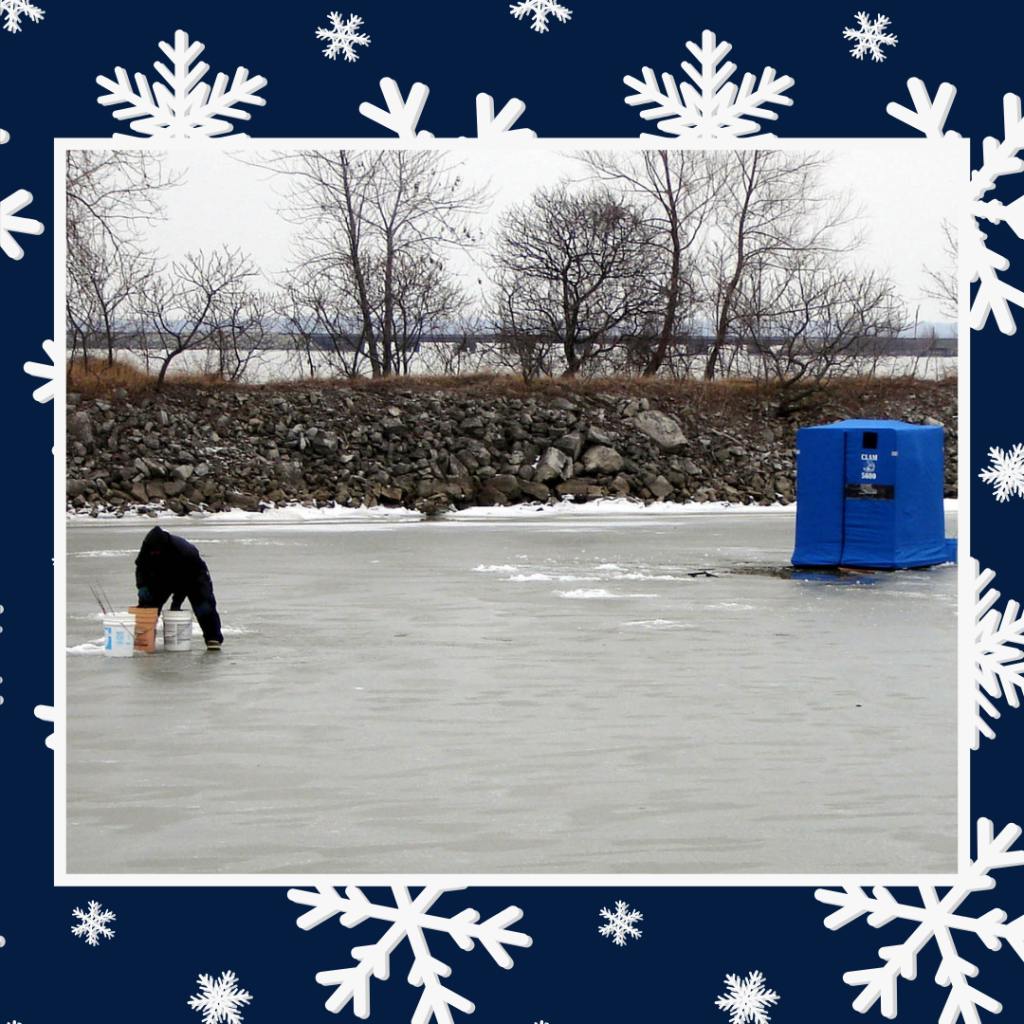As the winter months unfold, the Maumee River and Lake Erie can be tempting spots for recreational activities like ice fishing, skating, and combatting cabin fever. However, unfavorable temperatures and fluctuating weather patterns can make the ice conditions highly unpredictable and dangerous.
This year, be cautious of frequent thawing and re-freezing. The Mighty Maumee has already experienced ice breakups as it flows into Lake Erie, and residents are hopeful that the warmer temperatures will come gradually to avoid major flooding. But as the ice shifts and breaks, it’s more important than ever to stay vigilant and cautious when venturing out on the water.
Here are some essential tips to help keep you safe when enjoying winter activities on the river, lake, and other nearby ice-covered bodies of water:

1. Assessing Ice Safety
Before stepping out onto the ice, always assess its condition. Here are several factors to consider:
- Appearance: Clear blue ice is typically strong, while cloudy or white ice is often weaker. Watch out for cracks, holes, or ice that appears to be “honeycombed,” as these are signs of compromised strength.
- Temperature Fluctuations: The temperature can shift rapidly, and warmer daytime temperatures can cause ice to weaken. Keep an eye on daily highs and lows and avoid ice that has been exposed to melting during the day and refrozen at night.
- Snow Coverage: A layer of snow on top of the ice can insulate it, trapping heat beneath and weakening the ice’s structure.
- Water Depth: The thicker and deeper the water beneath the ice, the more unstable it can be, especially if the river is flowing or the body of water is large.
- Local Climate Changes: Weather patterns can change quickly. Sudden warm spells or heavy rain can cause ice to crack or melt rapidly.
2. Visual Cues to Watch For
You cannot rely solely on your eyes to judge the safety of the ice. Even if the ice looks solid, there may be dangerous conditions hidden beneath the surface. Here are a few warning signs:
- Flowing Water Near the Edges: Ice is often thinner where water flows, particularly near the river’s banks or in areas with currents.
- Cracks and Gaps: Cracks that you can see or hear in the ice are a serious risk. Water may also flow through these cracks, weakening the ice beneath.
- Abnormal Surfaces: Areas of the ice that appear uneven or have bubbles trapped underneath are often unsafe.
3. Follow Ice Thickness Guidelines
Remember this saying, “Thick and blue, tried and true; thin and crispy, way too risky.” Always measure ice thickness and adhere to these general safety guidelines:
- 3 inches or less: Keep off the ice entirely. At this thickness, the ice is far too thin to support any weight.
- 4 inches: This is generally safe for activities like walking, ice fishing, or cross-country skiing.
- 5 inches: Safe for one snowmobile or ATV, but always proceed with caution.
- 8-12 inches: Safe for a car or a group of people, but be extra cautious, as moving water underneath can still create risks.
- 12-15 inches: Safe for light pickup trucks or vans, but remember that the Maumee River is constantly flowing under the ice, which adds an additional layer of risk.
4. Know When to Turn Back
If you’re unsure about the safety of the ice, always err on the side of caution and turn back. It’s better to miss out on a day of fun than to risk injury or worse. In Ohio, there can be fines of up to $500 if you require rescue from an ice floe or other hazardous conditions on the ice.
5. Flooding Concerns
As the ice melts, especially in warmer weather, there’s always the risk of flooding. If the ice breaks up too quickly, it can cause rapid water flow and flooding, potentially damaging property. Residents are hopeful that the temperatures will rise slowly to avoid such flooding, but it’s crucial to be aware of these risks, especially in the spring thaw.
While the winter season offers plenty of opportunities for outdoor recreation, safety should always be your top priority—especially when venturing out onto the ice. The Maumee River, with its ever-changing conditions, requires extra caution. By following these guidelines, staying informed about the weather, and always checking the ice’s thickness, you can ensure a safe and enjoyable winter season.
Stay safe, and remember: When in doubt, don’t go out!
